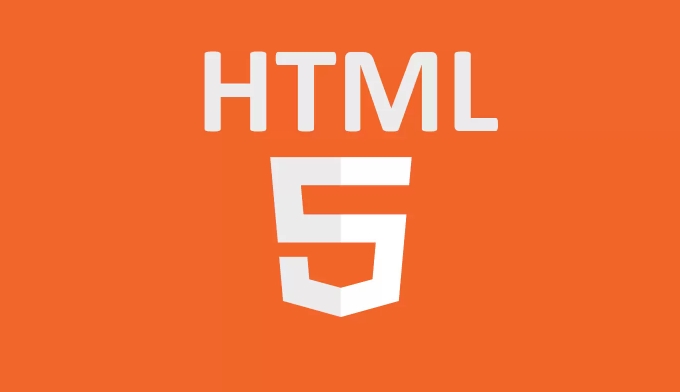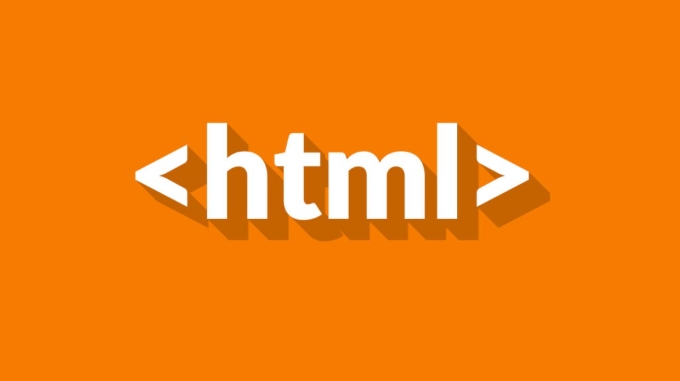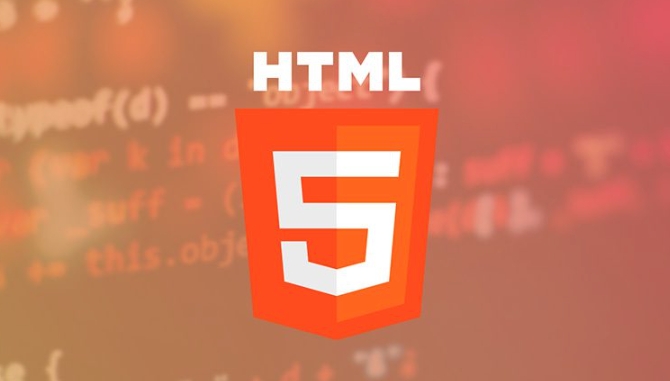To achieve a basic pop-up effect, you need to follow the following steps: 1. Structure: Use HTML to create trigger buttons, mask layer and pop-up content area; 2. Style: Set the default hidden, centered layout, mask background and close button styles through CSS; 3. Interaction: Use JavaScript to bind click events to control pop-up display and hide, and can expand the ESC key closing function; 4. Optimization: Add CSS animation to improve user experience. The entire process does not require a third-party library, which is suitable for quickly realizing basic pop-up functions.

Popups or modal boxes are very common in web pages, such as login boxes, prompt information, etc. It is actually not difficult to implement a basic pop-up window. It only requires HTML, CSS and a little JavaScript.

Next, I will talk about how to make a simple pop-up effect step by step.

1. Structure: Use HTML to build a basic framework
Write the structural part first, HTML mainly includes trigger buttons, mask layer and pop-up content area.
<!-- Trigger button-->
<button id="openModal">Open pop-up window</button>
<!-- Pop-up window structure->
<div class="modal" id="modal">
<div class="modal-overlay" id="modalOverlay"></div>
<div class="modal-content">
<span class="close-btn" id="closeBtn">×</span>
<p>This is a simple pop-up content</p>
</div>
</div>Here are a few key elements:

-
buttonis a button used to trigger pop-up display; -
.modalis the entire pop-up container; -
.modal-overlayis the background mask layer; -
.modal-contentis the specific content of the pop-up window; -
.close-btnis the close button, using the × symbol.
2. Style: Use CSS to control the appearance and animation of pop-up windows
This part mainly controls the style when pop-up windows are hidden by default, and the mask layer effect.
.modal {
display: none; /* hide by default*/
position: fixed;
top: 0;
left: 0;
width: 100%;
height: 100%;
z-index: 999;
}
.modal-overlay {
background-color: rgba(0, 0, 0, 0.5);
width: 100%;
height: 100%;
}
.modal-content {
background-color: #fff;
margin: 15% auto;
padding: 20px;
border-radius: 5px;
width: 300px;
position: relative;
box-shadow: 0 5px 15px rgba(0, 0, 0, 0.3);
}
.close-btn {
position: absolute;
top: 10px;
right: 15px;
font-size: 24px;
cursor: pointer;
}Pay attention to a few points:
- The pop-up window is hidden by default (display: none), and will be displayed using JS later;
- The masking layer was made of a translucent black background;
- The content of the pop-up window is centered on margin and fixed width;
- The close button is absolutely positioned and placed in the upper right corner.
3. Interaction: Use JS to control display and hide
This part is the most important thing, it is responsible for binding click events and switching pop-up window status.
const modal = document.getElementById("modal");
const openBtn = document.getElementById("openModal");
const closeBtn = document.getElementById("closeBtn");
const overlay = document.getElementById("modalOverlay");
// Click the button to openBtn.addEventListener("click", () => {
modal.style.display = "block";
});
// Click the close button or mask layer to close the pop-up window closeBtn.addEventListener("click", () => {
modal.style.display = "none";
});
overlay.addEventListener("click", () => {
modal.style.display = "none";
});You can expand more functions as needed, such as pressing the ESC key to close the pop-up window:
document.addEventListener("keydown", (e) => {
if (e.key === "Escape" && modal.style.display === "block") {
modal.style.display = "none";
}
});4. Optional optimization: add a little animation to make the experience smoother
Although the pop-up window can be used now, it is a bit stiff to directly display/hide. You can use CSS animation to make it more natural:
.modal-content {
animation: fadeIn 0.3s ease-in-out;
}
@keyframes fadeIn {
from {
opacity: 0;
transform: translateY(-20px);
}
to {
opacity: 1;
transform: translateY(0);
}
}In this way, every time the pop-up window appears, it will have a fading effect and the user experience will be better.
Basically that's it. You can just put these three pieces of code into HTML, CSS, and JS files respectively, and you will see a basic pop-up window that is available. No additional libraries are required, suitable for fast implementation of needs.
The above is the detailed content of How to create a simple popup or modal with HTML, CSS, and JS?. For more information, please follow other related articles on the PHP Chinese website!

Hot AI Tools

Undress AI Tool
Undress images for free

Undresser.AI Undress
AI-powered app for creating realistic nude photos

AI Clothes Remover
Online AI tool for removing clothes from photos.

Clothoff.io
AI clothes remover

Video Face Swap
Swap faces in any video effortlessly with our completely free AI face swap tool!

Hot Article

Hot Tools

Notepad++7.3.1
Easy-to-use and free code editor

SublimeText3 Chinese version
Chinese version, very easy to use

Zend Studio 13.0.1
Powerful PHP integrated development environment

Dreamweaver CS6
Visual web development tools

SublimeText3 Mac version
God-level code editing software (SublimeText3)

Hot Topics
 Explain the purpose of the role attribute in ARIA.
Jun 14, 2025 am 12:35 AM
Explain the purpose of the role attribute in ARIA.
Jun 14, 2025 am 12:35 AM
ARIA's role attribute is used to define the role of web elements and improve accessibility. 1. Role attribute helps assistive technology to understand the functions of elements, such as buttons, navigation, etc. 2. Use role attributes to assign specific roles to non-semantic HTML elements. 3. The role attribute should be consistent with the element behavior and be verified by the accessibility tool test.
 HTML and Design: Creating the Visual Layout of Websites
Jun 14, 2025 am 12:39 AM
HTML and Design: Creating the Visual Layout of Websites
Jun 14, 2025 am 12:39 AM
How to create a website layout? 1. Use HTML tags to define the content structure, such as, ,. 2. Control styles and positions through CSS, using box model, float or Flexbox layout. 3. Optimize performance, reduce HTTP requests, use cache and optimize images, and ensure responsive design.
 How do I stay up-to-date with the latest HTML standards and best practices?
Jun 20, 2025 am 08:33 AM
How do I stay up-to-date with the latest HTML standards and best practices?
Jun 20, 2025 am 08:33 AM
The key to keep up with HTML standards and best practices is to do it intentionally rather than follow it blindly. First, follow the summary or update logs of official sources such as WHATWG and W3C, understand new tags (such as) and attributes, and use them as references to solve difficult problems; second, subscribe to trusted web development newsletters and blogs, spend 10-15 minutes a week to browse updates, focus on actual use cases rather than just collecting articles; second, use developer tools and linters such as HTMLHint to optimize the code structure through instant feedback; finally, interact with the developer community, share experiences and learn other people's practical skills, so as to continuously improve HTML skills.
 How do I use the element to represent the main content of a document?
Jun 19, 2025 pm 11:09 PM
How do I use the element to represent the main content of a document?
Jun 19, 2025 pm 11:09 PM
The reason for using tags is to improve the semantic structure and accessibility of web pages, make it easier for screen readers and search engines to understand page content, and allow users to quickly jump to core content. Here are the key points: 1. Each page should contain only one element; 2. It should not include content that is repeated across pages (such as sidebars or footers); 3. It can be used in conjunction with ARIA properties to enhance accessibility. Usually located after and before, it is used to wrap unique page content, such as articles, forms or product details, and should be avoided in, or in; to improve accessibility, aria-labeledby or aria-label can be used to clearly identify parts.
 How do I create a basic HTML document?
Jun 19, 2025 pm 11:01 PM
How do I create a basic HTML document?
Jun 19, 2025 pm 11:01 PM
To create a basic HTML document, you first need to understand its basic structure and write code in a standard format. 1. Use the declaration document type at the beginning; 2. Use the tag to wrap the entire content; 3. Include and two main parts in it, which are used to store metadata such as titles, style sheet links, etc., and include user-visible content such as titles, paragraphs, pictures and links; 4. Save the file in .html format and open the viewing effect in the browser; 5. Then you can gradually add more elements to enrich the page content. Follow these steps to quickly build a basic web page.
 What is an HTML tag?
Jun 13, 2025 am 12:36 AM
What is an HTML tag?
Jun 13, 2025 am 12:36 AM
HTMLtagsareessentialforstructuringwebpages.Theydefinecontentandlayoutusinganglebrackets,ofteninpairslikeand,withsomebeingself-closinglike.HTMLtagsarecrucialforcreatingstructured,accessible,andSEO-friendlywebpages.
 How do I create checkboxes in HTML using the element?
Jun 19, 2025 pm 11:41 PM
How do I create checkboxes in HTML using the element?
Jun 19, 2025 pm 11:41 PM
To create an HTML checkbox, use the type attribute to set the element of the checkbox. 1. The basic structure includes id, name and label tags to ensure that clicking text can switch options; 2. Multiple related check boxes should use the same name but different values, and wrap them with fieldset to improve accessibility; 3. Hide native controls when customizing styles and use CSS to design alternative elements while maintaining the complete functions; 4. Ensure availability, pair labels, support keyboard navigation, and avoid relying on only visual prompts. The above steps can help developers correctly implement checkbox components that have both functional and aesthetics.
 How do I minimize the size of HTML files?
Jun 24, 2025 am 12:53 AM
How do I minimize the size of HTML files?
Jun 24, 2025 am 12:53 AM
To reduce the size of HTML files, you need to clean up redundant code, compress content, and optimize structure. 1. Delete unused tags, comments and extra blanks to reduce volume; 2. Move inline CSS and JavaScript to external files and merge multiple scripts or style blocks; 3. Simplify label syntax without affecting parsing, such as omitting optional closed tags or using short attributes; 4. After cleaning, enable server-side compression technologies such as Gzip or Brotli to further reduce the transmission volume. These steps can significantly improve page loading performance without sacrificing functionality.






